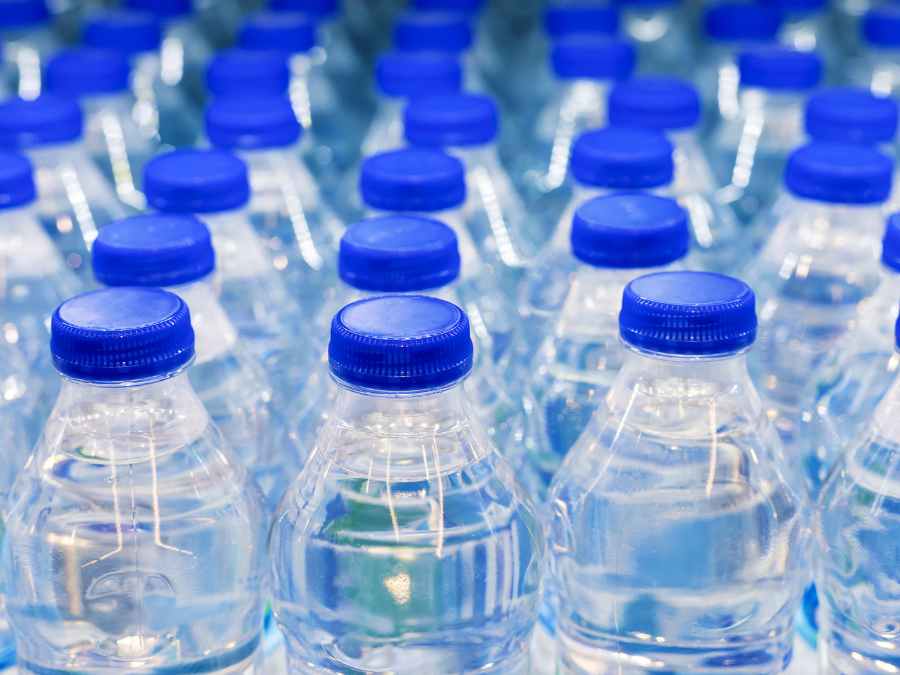You remind your crew to drink water, over and over, but the same symptoms keep showing up. Headaches. Muscle cramps. Dizziness. Bottles stay full. Breaks get skipped. This isn’t carelessness. It’s hydration fatigue, when workers start tuning out reminders and push past the warning signs. This guide shares practical ways to reset hydration habits, support smarter fluid intake, and use real-time monitoring to spot dehydration before it affects safety or performance.
Simple Ways to Improve Crew Hydration

OSHA recommends that workers drink about 8 ounces of cool water every 15 to 20 minutes during hot or high-exertion tasks. That adds up to 24 to 32 ounces per hour, far more than most people actually consume. According to the CDC, U.S. adults drink an average of just 44 ounces of plain water per day.
Bridging that gap doesn’t require a full-scale overhaul. Consistency is what counts. Small, repeatable changes can shift how crews approach hydration and help build better habits that last.
- Start with a Quick Refresher: Don’t assume everyone knows the signs. Use toolbox talks or morning huddles to quickly review what dehydration looks like in the field. Muscle cramps, headache, nausea, dark urine, and weakness are all early red flags. Remind workers that confusion, clumsiness, or poor decision-making often show up later, when it’s already serious.
- Set Goals They Can Track: Tracking water intake doesn’t have to feel like homework. Recommend simple, visible benchmarks, like finishing a 32-oz bottle by mid-morning and a second one after lunch. Some crews mark their bottles with tape to show hourly goals. Others turn it into a team challenge. The point isn’t perfection, it’s building awareness and momentum.
- Build Hydration Into Your Breaks: Water breaks should never feel optional. Tie water breaks to routine pauses in the workday, like before a shift starts, during mid-morning checks, or after wrapping a labor-heavy task. The more natural they feel, the more workers will stick to them.
- Keep Water Cool and Nearby: If it’s a hassle to reach the water, it won’t get used. Set up hydration stations at the edges of the work zone, not just in the shade tent or job trailer. Coolers should be stocked with water kept below 60°F. Use insulated containers and rotate frozen bottles when necessary. This small effort makes a big difference when morale is low or conditions are rough.
- Use Electrolyte Drinks Appropriately: On high-sweat days, water alone may not be enough. When the work is intense or the temperature spikes, OSHA supports using sports drinks with electrolytes to help replace lost sodium and other key minerals. Electrolytes support better fluid retention, which helps the body regulate temperature more effectively. Just avoid overdoing it with sugar-laden options, and never rely on salt tablets unless specifically advised by a medical professional.
Knowing what workers should be doing is one thing; knowing what’s actually happening in the moment is something else entirely.
Real-Time Monitoring: Spotting Trouble Before It Escalates
It’s not always easy to know who’s getting enough fluids. Thirst isn’t reliable. Symptoms don’t always show up right away. Workers might push through fatigue or dizziness, thinking it’s just part of the job, and by the time they speak up, dehydration may have already affected their coordination, focus, or heat tolerance.
That’s where real-time physiological monitoring makes a difference. These systems track indicators like heart rate, skin temperature, core body temperature, and exertion levels in real time, capturing the effects of dehydration and heat stress as they develop, not after. When a worker’s readings go outside expected safe ranges, supervisors receive alerts that allow them to act quickly.
This isn’t about watching every step someone takes. It’s about spotting early physiological warning signs that can’t be seen from the outside. For example, if a worker’s core temperature starts to rise faster than normal during a routine task, that could point to insufficient hydration, delayed cooling, or even an early heat strain response, even if they “feel fine” at that moment.
In practical terms, physiological monitoring gives you:
- Real-time alerts when a worker’s vital signs exceed safe thresholds
- Trends over time to identify individuals or crews at higher risk
- Objective data to back decisions on rest breaks, rotations, and workload changes
For safety leaders, this means no more guessing. You’re not waiting for someone to show signs of distress. You’re seeing real-time data that reflects what’s actually happening inside their body. That helps prevent conditions like heat exhaustion, which can sneak up quickly in hot environments or when PPE traps body heat.
Real-time monitoring also supports long-term planning. If your analytics show that a certain task or location consistently pushes workers to high exertion levels, you can proactively adjust hydration plans, staffing, or break frequency. Over time, that leads to fewer incidents and better team performance.
Real-time monitoring gives you the visibility to act early. But keeping hydration on track also means shifting how teams think about it every day.
A Culture Shift Starts with Small Wins
Dehydration isn’t just a personal habit problem; it’s a safety issue that shows up across entire teams. And right now, most crews aren’t drinking enough. The data backs it up. So do the symptoms you see every week.
If the old reminders aren’t working, it’s time to reset the approach. Start with better access to cool water. Reinforce hydration during breaks and toolbox talks. Give supervisors the tools to lead by example. And when possible, bring in monitoring that shows what’s really happening, not just what you hope is happening.
You don’t need a full program overhaul. One small change, repeated daily, can shift behavior. It starts with one lead reaching for a bottle, one supervisor calling for a break, one crew seeing hydration as part of the job, not something extra.
Ready to make hydration a consistent part of your safety plan? Start by auditing your current setup, then make one change today.

